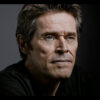“Greek Apricots”, interview with director Jan Krevatin
"Greek Apricots", a seemingly incompatible pair forming a bond during a night in a gas station
Listeners:
Top listeners:
 play_arrow
play_arrow
ENGLISH Channel 01 If English is your language, or a language you understand, THIS IS YOUR CHANNEL !
 play_arrow
play_arrow
ITALIAN Channel 02 Se l’italiano è la tua lingua, o una lingua che conosci, QUESTO È IL TUO CANALE!
 play_arrow
play_arrow
EXTRA Channel 03 FRED Film Radio channel used to broadcast press conferences, seminars, workshops, master classes, etc.
 play_arrow
play_arrow
GERMAN Channel 04 Wenn Ihre Sprache Deutsch ist, oder Sie diese Sprache verstehen, dann ist das IHR KANAL !
 play_arrow
play_arrow
POLISH Channel 05
 play_arrow
play_arrow
SPANISH Channel 06 Si tu idioma es el español, o es un idioma que conoces, ¡ESTE ES TU CANAL!
 play_arrow
play_arrow
FRENCH Channel 07 Si votre langue maternelle est le français, ou si vous le comprenez, VOICI VOTRE CHAINE !
 play_arrow
play_arrow
PORTUGUESE Channel 08
 play_arrow
play_arrow
ROMANIAN Channel 09 Dacă vorbiţi sau înţelegeţi limba română, ACESTA ESTE CANALUL DUMNEAVOASTRĂ!
 play_arrow
play_arrow
SLOVENIAN Channel 10
 play_arrow
play_arrow
ENTERTAINMENT Channel 11 FRED Film Radio Channel used to broadcast music and live shows from Film Festivals.
 play_arrow
play_arrow
BULGARIAN Channel 16 Ако българският е вашият роден език, или го разбирате, ТОВА Е ВАШИЯТ КАНАЛ !
 play_arrow
play_arrow
CROATIAN Channel 17 Ako je hrvatski tvoj jezik, ili ga jednostavno razumiješ, OVO JE TVOJ KANAL!
 play_arrow
play_arrow
LATVIAN Channel 18
 play_arrow
play_arrow
DANISH Channel 19
 play_arrow
play_arrow
HUNGARIAN Channel 20
 play_arrow
play_arrow
DUTCH Channel 21
 play_arrow
play_arrow
GREEK Channel 22
 play_arrow
play_arrow
CZECH Channel 23
 play_arrow
play_arrow
LITHUANIAN Channel 24
 play_arrow
play_arrow
SLOVAK Channel 25
 play_arrow
play_arrow
ICELANDIC Channel 26 Ef þú talar, eða skilur íslensku, er ÞETTA RÁSIN ÞÍN !
 play_arrow
play_arrow
INDUSTRY Channel 27 FRED Film Radio channel completely dedicated to industry professionals.
 play_arrow
play_arrow
EDUCATION Channel 28 FRED Film Radio channel completely dedicated to film literacy.
 play_arrow
play_arrow
SARDU Channel 29 Si su sardu est sa limba tua, custu est su canale chi ti deghet!
 play_arrow
play_arrow
“Conversation with” at the 20th Marrakech IFF, interview with actor Willem Dafoe Bénédicte Prot
For the average viewer, who is only faced with the final product of filmmaking (the film), it’s difficult to realise the amount of work and people involved in filmmaking.
The American director George Stevens once said that making a film is like “trying to be a traffic cop and write a poem at the same time”. In other words, the final film may or may not be a work of art or entertainment, but in order to get there, a filmmaker needs time, patience and normally a large amount of people to work with. As Orson Welles, one of the greatest filmmakers, explained, “a writer needs a pen, an artist needs a brush, but a filmmaker needs an army”.
This army is called a “film crew”, which can be made up of a very different number of people, depending on the budget and size of the film.
The director normally sits outside the complex structure of a film crew. They are responsible for overseeing the creative aspects of a film, including controlling the content and flow of the film’s plot, directing the performances of actors, organizing and selecting the locations in which the film will be shot and managing technical details such as the positioning of cameras. However, the directors don’t have complete power over the film. They are ultimately subordinate to the film producers. There are, however, some exceptions: those directors who have the final cut privilege. They decide what the final form of the film will be, but, nowadays, these are only a few powerful filmmakers such as Steven Spielberg or James Cameron.
Producers set up the right conditions for filmmaking. They initiate the project, raise funding, hire staff and are involved in all phases of the project, from conception to the distribution of the film. Producers normally work under quite a lot of pressure to make sure that the films are finished on time and do not end up being more expensive than they budgeted for.
The work of the film crew is divided into three phases: pre-production, production and post-production.
In pre-production, every step of the creation of the film is carefully designed and planned. Once the final draft of the script is available, the director must try to turn the words into images. This is done, first of all, on paper, with the help of illustrators who draw storyboards with drawings of what the film will look like. Also in pre-production, the casting director finds actors to play the characters in the film, with the help of the director.
Once pre-production is finished, production starts. There are many people involved in the production of a film, working on set. One of the key groups is the camera and lighting department, normally managed by the director of photography or cinematographer, who decides with the director what the film looks like, the lighting, the framing of the shots and the cameras and lights that must be used.
Along with the director of the film and the director of photography, the look of the film is also determined by the art department, where a production designer is responsible for creating the visual appearance of settings, costumes and character makeup.
Once the movie has been filmed, that is, once the production is over, the post-production starts and is managed by a post-production supervisor. Here the key figure is the editor, who is in charge of assembling the various shots into a coherent film with the help of the director. As well as the editor and his team, the post-production also involves sound editing, visual effects and animation.
Finally, when the film is finished, it is time to make it available for viewing, that is, film distribution starts. The film needs to be marketed, promoted and made available in cinema and or television, DVDs, video-on-demand platforms, streaming.
Producing partner: University of Roehampton http://www.roehampton.ac.uk/home/
Voice Talents: Dylan Ayres, Sharon Fryer
Music: Bensound – Brazilsamba (Composed and performed by Bensound http://www.bensound.com)
Written by: fredfilmradio
Guest
Film
Festival
No related posts.
"Greek Apricots", a seemingly incompatible pair forming a bond during a night in a gas station
"Skin on Skin", the passionate and unexpected love story by Simon Schneckenburger is taking part to the 8th edition of Future Frames at KVIFF
Dissection of an incoherence in crisis, a Catalan but universal story world premiering at the 8th Future Frames at the KVIFF
Paolo Sorrentino’s “La Grazia” to open the 82nd Venice Film Festival on August 27, 2025. World premiere with Toni Servillo in competition at Biennale Cinema.





© 2023 Emerald Clear Ltd - all rights reserved.